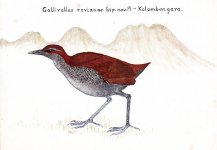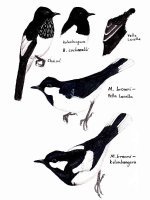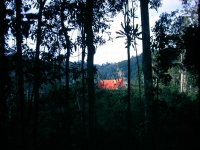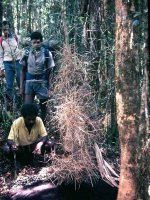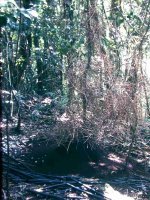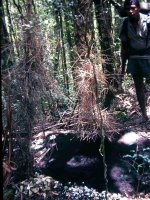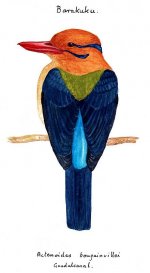Taliabu
Rheindt, F. E. 2010
New biogeographic records for the avifauna of Taliabu (Sula Islands, Indonesia), with preliminary documentation of two previously undiscovered taxa
Bull. B.O.C. 130(1)
Summary.—The Sula archipelago lies between Sulawesi and the northern Moluccas in Wallacea. The avifauna of the archipelago, including Taliabu, its largest and most diverse island, is under-explored, and current understanding is based on just one major historic collecting effort and several visits by modern ornithologists. There is limited knowledge especially of the highland birds of Taliabu, since only one ornithological expedition has reached this area, discovering in the process c.7 previously unrecorded species potentially meritorious of subspecific recognition. I describe the results of a two-week survey of Taliabu, encompassing both lowland and highland areas. An update is given on the state of the habitat on Taliabu, which has undergone major forest conversion and degradation due to logging, agricultural practices and forest fires. I present new elevational information for at least 14 bird species, and records of four species previously unrecorded on the island. Two of these represent undescribed taxa, one of them probably a new species. Comments on the taxonomy of several Taliabu birds are made on the basis of fresh vocal or morphological data, indicating that many endemic Sula races merit upgrading to species status. Given rapid forest loss on Taliabu, judicious collecting and genetic and vocal work on the taxonomy of its birds are urgently required.
The undescribed taxa are :
The "Taliabu Bush Warbler" (Bradypterus sp.)
The "Taliabu Island Thrush" (Turdus poliocephalus ssp.)




